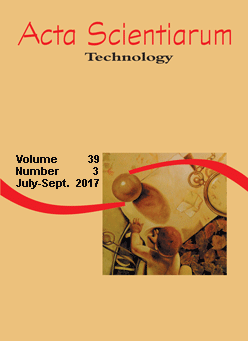<b>Application of particle swarm optimization in inverse finite element modeling to determine the cornea´s mechanical behavior
DOI:
https://doi.org/10.4025/actascitechnol.v39i3.29884Keywords:
inverse analysis, finite element method, swarm intelligence, hyperelastic parameters, human corneas.Abstract
Particle Swarm Optimization (PSO) was foregrounded by finite element (FE) modeling to predict the material properties of the human cornea through inverse analysis. Experimental displacements have been obtained for corneas of a donor approximately 50 years old, and loaded by intraocular pressure (IOP). FE inverse analysis based on PSO determined the material parameters of the corneas with reference to first-order, Ogden hyperelastic model. FE analysis was repeated while using the commonly-used commercial optimization software HEEDS, and the rates of the same material parameters were used to validate PSO outcome. In addition, the number of optimization iterations required for PSO and HEEDS were compared to assess the speed of conversion onto a global-optimum solution. Since PSO-based analyses produced similar results with little iteration to HEEDS inverse analyses, PSO capacity in controlling the inverse analysis process to determine the cornea material properties via finite element modeling was demonstrated.
Â
Downloads
Downloads
Published
How to Cite
Issue
Section
License
DECLARATION OF ORIGINALITY AND COPYRIGHTS
I Declare that current article is original and has not been submitted for publication, in part or in whole, to any other national or international journal.
The copyrights belong exclusively to the authors. Published content is licensed under Creative Commons Attribution 4.0 (CC BY 4.0) guidelines, which allows sharing (copy and distribution of the material in any medium or format) and adaptation (remix, transform, and build upon the material) for any purpose, even commercially, under the terms of attribution.
Read this link for further information on how to use CC BY 4.0 properly.



















8.png)




